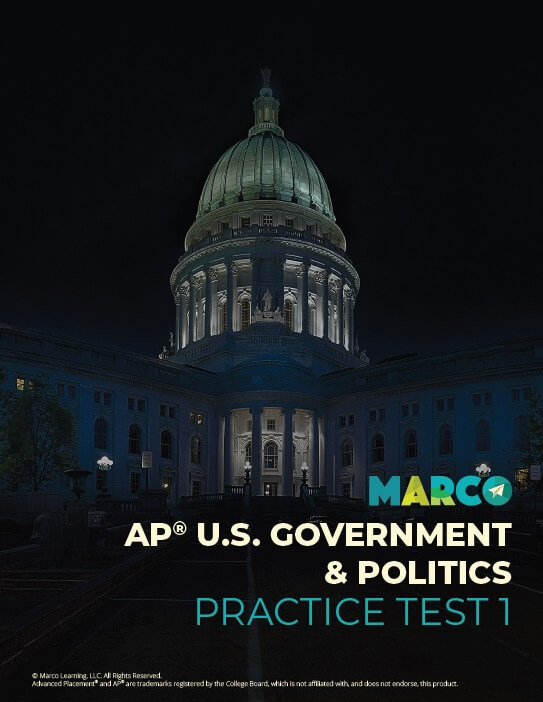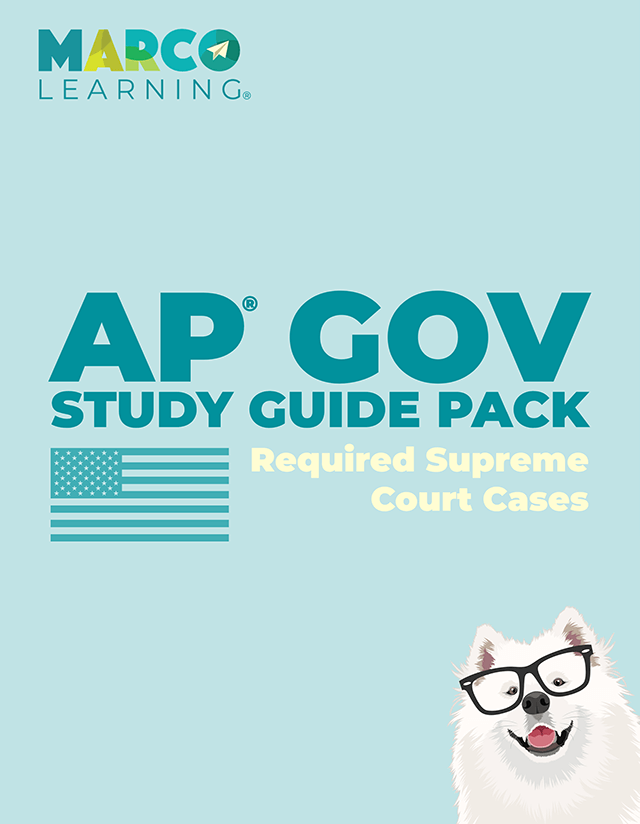


To score well on your AP U.S. Government and Politics Exam, it is important to become familiar with all of the required Supreme Court cases. In the free-response section of your AP® U.S. Government Exam, you will have to answer four essay questions. The third of these questions is a SCOTUS comparison essay, in which you will be required to compare a non-required Supreme Court case with a required Supreme Court case, so get to know each required Supreme Court case as well as possible!
The required Supreme Court cases for the AP U.S. Government and Politics Exam in 2021 are:
Marbury v. Madison (1803)
McCulloch v. Maryland (1819)
Schenck v. the United States (1919)
Brown v. Board of Education (1954)
Engel v. Vitale (1962)
Baker v. Carr (1962)
Gideon v. Wainwright (1963)
Tinker v. Des Moines Independent Community School District (1969)
New York Times Co. v. United States (1971)
Wisconsin v. Yoder (1972)
Roe v. Wade (1973)
Shaw v. Reno (1993)
United States v. Lopez (1995)
McDonald v. Chicago (2010)
Citizens United v. Federal Election Commission (2010)
FACTS OF THE CASE
In 1971, three Amish families refused to enroll their children in public school after they completed the eighth grade in the belief that doing so would violate their religious convictions. The Amish believe that attendance at a public high school would teach their children ideas that were contrary to the Amish religion and way of life. The Amish families involved in the case sincerely believed that sending their children to public high school would threaten their children’s salvation and interfere with their ability to integrate into the Amish lifestyle after they finished their schooling. They were convicted of violating the Wisconsin Compulsory School Attendance Law, which required that all students attend public school until they were 16 years old, and fined $5 per family. The case was appealed to the U.S. Supreme Court. The Amish families were represented by a coalition of non-Amish religious leaders who had an interest in the religious freedom aspects of the case.
THE DECISION
In a unanimous decision, the Court ruled that public high school education was “in sharp conflict with the fundamental mode of life mandated by Amish religion,” and that it would be a violation of the First Amendment’s free exercise clause to force Amish children to attend public school past the eighth grade.
IMPACT
The ruling in Wisconsin v. Yoder developed the precedent that parents were allowed to educate their children outside of either the public school system or traditional private schools. In doing so, it prioritized the free exercise of religion over state interests. The ruling is often cited by homeschooling advocates, who believe that requirements regarding state requirements about education interfere with the free exercise of their religion.
PRECEDENT & SUBSEQUENT CASES
Pierce v. Society of Sisters (1925) argued that the “liberty” of the Fourteenth Amendment granted parents the right to choose whether to enroll their children in public school, private school, or homeschool. Children could not be forced to attend public education.
United States v. Lee (1982) ruled that religious exemptions to federal law were limited when the good of the country outweighed the good of the individual. The United States v. Lee decision required an Amish business owner to pay social security taxes over his objections that these taxes violated his First Amendment right.
KEY TERMS
The Free Exercise Clause of the First Amendment protects individuals from any act of Congress that “prohibits the free exercise” of religion. The Amish are a group of Christian traditionalists who reject much of modern technology in the belief that simple living, plain dress, and strict adherence to the rules of the Church will help them find favor with God.
 Help
Help